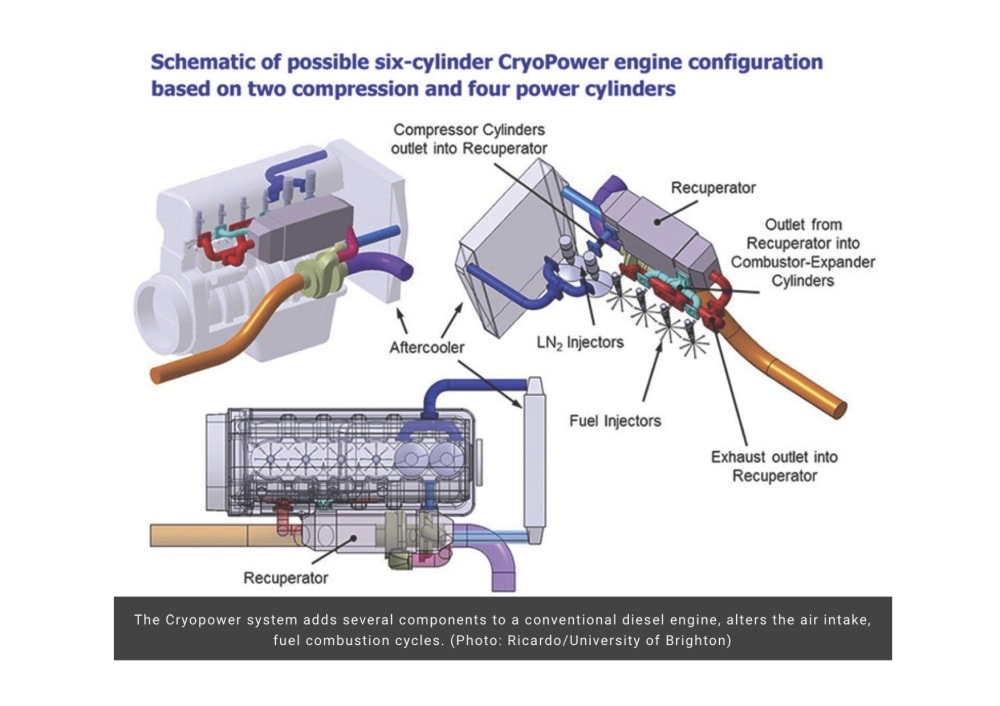The economic impact of having to abandon reciprocal engines and purchase new electric vehicles will generally have an economic impact in all sectors; for disadvantaged communities and some industries, the impact could be devastating. We propose a zero-carbon alternative. Our goal is to create a retrofittable system that enables existing vehicles to operate on stored thermal energy, technologies that are based on historical applications, using the basic physics of Brayton Cycle reciprocal engines and a dense drive fluid.
Almost a century before the dominance of the gasoline and diesel-fueled internal combustion engines, compressed air and liquid nitrogen were used to power machines and various vehicles worldwide. The limitation of these technologies was the requirement of external fire for thermal energy. All Brayton Cycle engines only require a heat source plus a drive fluid. In turbines, the drive fluids are compressed air or water. However, to provide a sufficiently dense drive fluid in a reciprocal engine will require the use of compressed air or better liquid nitrogen (LN2). Any reciprocal engine with sufficient thermal energy can be adapted to operate on heat without the need for combustion in the cylinders.
With our approach, we can modify existing transportation units simply by adding our proprietary high temperature, high-density thermal storage system and using compressed air or LN2 as a dense enough drive fluid that when heated expanse to create an equal pressure that is experienced during the combustion of various fuels. The Charles Laws define the physics that heat can increase the pressure and enough heat will create the pressure to propel the cylinders. Although metering of the thermal energy and the drive gas must match the vehicle’s operational parameters and this will vary with each type of engine. Whether massive marine engines or small vehicles the basic approach would be the same. We have delivery systems for ultra-cold LM2 or compressed gases and have used insulated thermal conduits able to deliver the energy slightly under 900°C. Electronically controlled valves can be used to synchronize the timing.
The impact of this approach is wide-ranging as any engine could potentially be modified at a fraction of the cost of replacing them with an electric vehicle (EV). Like EVs, this is a zero-carbon solution. Beyond the initial cost savings, this technology provides a solution for the limited range of most electric vehicles and vessels as the energy density of our storage is exponentially greater than any combustion fuel. Based on an average of 6 mpg for class 7 or 8 trucks and an at the 2021 cost of fuel of $3.87 gal using highway grade diesel this distance would cost $1,821 as compared to $1750 and if using concessionary rates from utilities this cost could be reduced substantially. Our research at this stage will be refining the design of our storage to provide a universal design adaptable to any class of vehicles and an installation method for large vessels.
Like this entry?
-
About the Entrant
- Name:Virgil Perryman
- Type of entry:individual
- Software used for this entry:proprietary
- Patent status:patented

